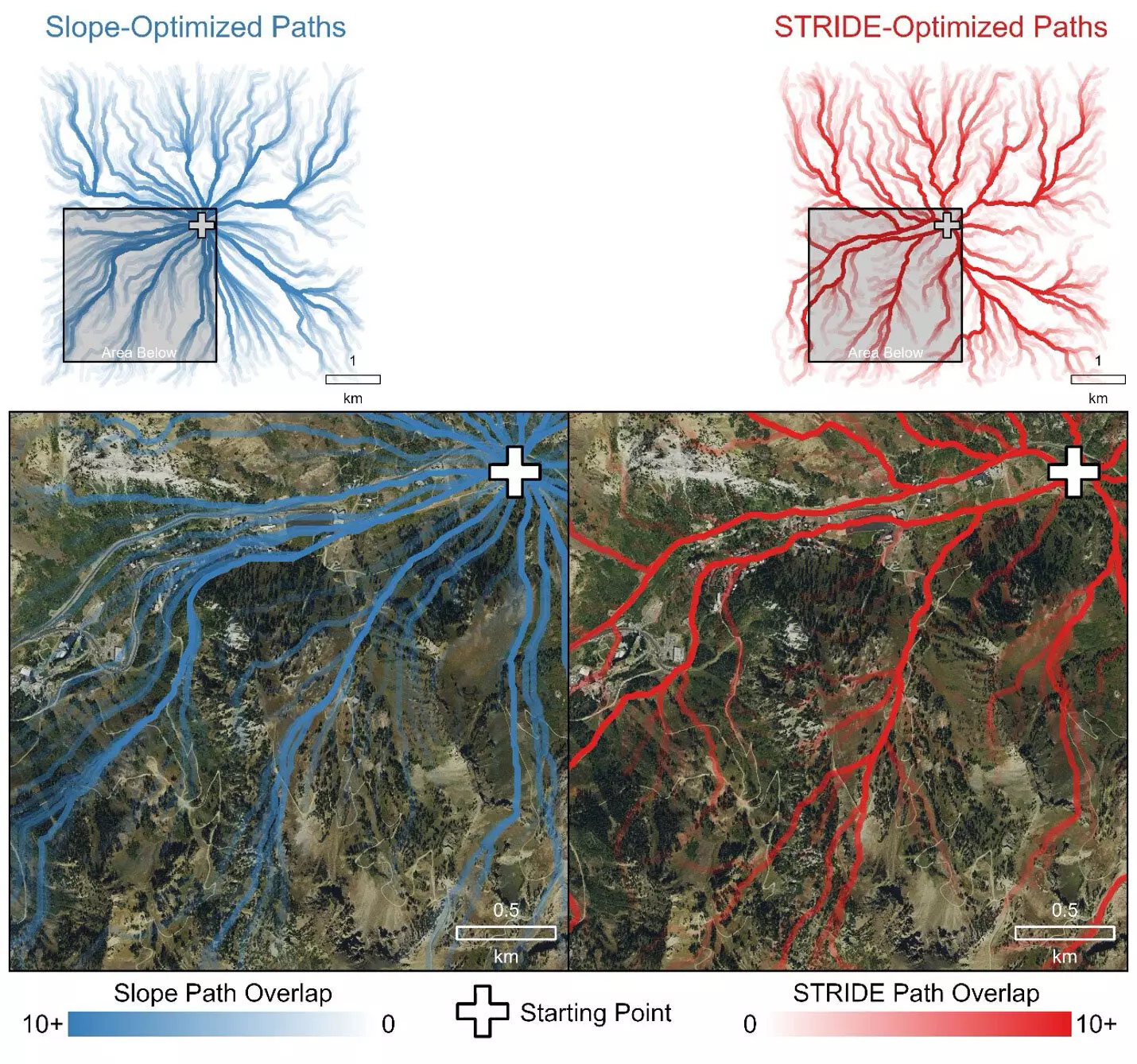As wildfires rage out of control, the urgency for firefighters to evacuate safely intensifies. The chaotic scene of a conflagration transcends mere flames; it involves navigating through diverse terrains that present a myriad of challenges. Firefighters, often reliant on instinct and lived experience, face a critical question amidst the flames: What escape route will grant them the best chance of survival? Traditionally, these professionals have stood at the mercy of rudimentary techniques, which merely address geographical steepness, neglecting the intricate nuances of terrain and vegetation that can significantly impact their escape routes.
Today, with wildfire occurrences on the rise—exacerbated by climate change—innovative solutions are necessary for fire suppression strategies. The incorporation of advanced modeling tools into evacuation planning not only represents a significant leap in technology but also a crucial step in ensuring firefighter safety during emergencies.
For years, the decision-making process behind evacuation strategies relied heavily on empirical data and intuition rather than precise metrics. The inadequacy of existing tools often results in severe underestimations of the challenges posed by various landscapes. While slope measurements serve as an essential component of navigation planning, they fail to account for critical factors such as surface roughness and vegetation density, which can dramatically alter travel times. In scenarios where seconds count, any miscalculation can spell disaster.
This pressing concern has sparked research to develop comprehensive models that encapsulate the complexities of wildfire terrain. It is in this context that the University of Utah introduced the STRIDE model—an innovative framework designed to revolutionize how firefighters and other first responders plan their escape. STRIDE’s development represents a much-needed shift from simplistic, slope-based approaches toward a multidimensional understanding of the natural landscape.
STRIDE, an acronym for Simulating Travel Rates in Diverse Environments, has emerged as a pioneering tool for accurately predicting travel times across various terrains. It integrates key elements such as ground roughness, vegetation density, and slope steepness into one cohesive system, marking a significant advancement for emergency personnel navigating hazardous areas.
By analyzing extensive airborne Light Detection and Ranging (LiDAR) data, researchers have established an algorithm that mimics natural decision-making processes. This advanced modeling technique not only identifies the quickest escape routes but does so in a way that aligns closely with human intuition. With STRIDE, firefighters can strategically select paths that would instinctively appeal to them—favoring social trails, established roads, and smoother surfaces over obstacles such as dense foliage and uneven terrain.
To validate STRIDE’s efficacy, extensive field trials were carried out in various environments, including urban settings and dense forests. Volunteers traversed 100-meter transects designed to test the model against traditional slope-only approaches. The results were illuminating: STRIDE consistently demonstrated the ability to predict walking times with remarkable accuracy, outperforming its predecessors significantly.
One key aspect of STRIDE’s success lies in its reflective character—adapting its recommendations based on a wide array of human performance metrics gathered during trials. This adaptability positions STRIDE as a versatile tool for diverse applications beyond wildfire management, including pedestrian mobility assessments in urban planning and disaster response scenarios.
The implications of the STRIDE model extend far beyond firefighting. Its utilization promises enhancements for various disciplines ranging from archaeological site assessments to military logistics and health care mobilization in rural areas. The model empowers professionals to make informed decisions that could potentially save lives, prevent accidents, and ensure efficient resource management.
Moreover, by making STRIDE publicly accessible, the researchers have underscored the importance of collaboration in fostering advancements in safety and efficiency across industries. Organizations can integrate STRIDE into their own models, harnessing available LiDAR data to tailor the system to their specific needs.
As the frequency and intensity of wildfires increase, the urgency for effective, responsive evacuation strategies cannot be overstated. The STRIDE model represents more than a technical innovation; it is an essential tool that may redefine emergency operations in unpredictable environments. By incorporating previously overlooked factors, STRIDE stands at the forefront of a new era focused on safety, efficiency, and a more nuanced understanding of our natural landscapes. As we enhance our approaches to wildfire response, STRIDE offers hope—a beacon guiding firefighters and first responders toward safer paths through chaos.


Leave a Reply